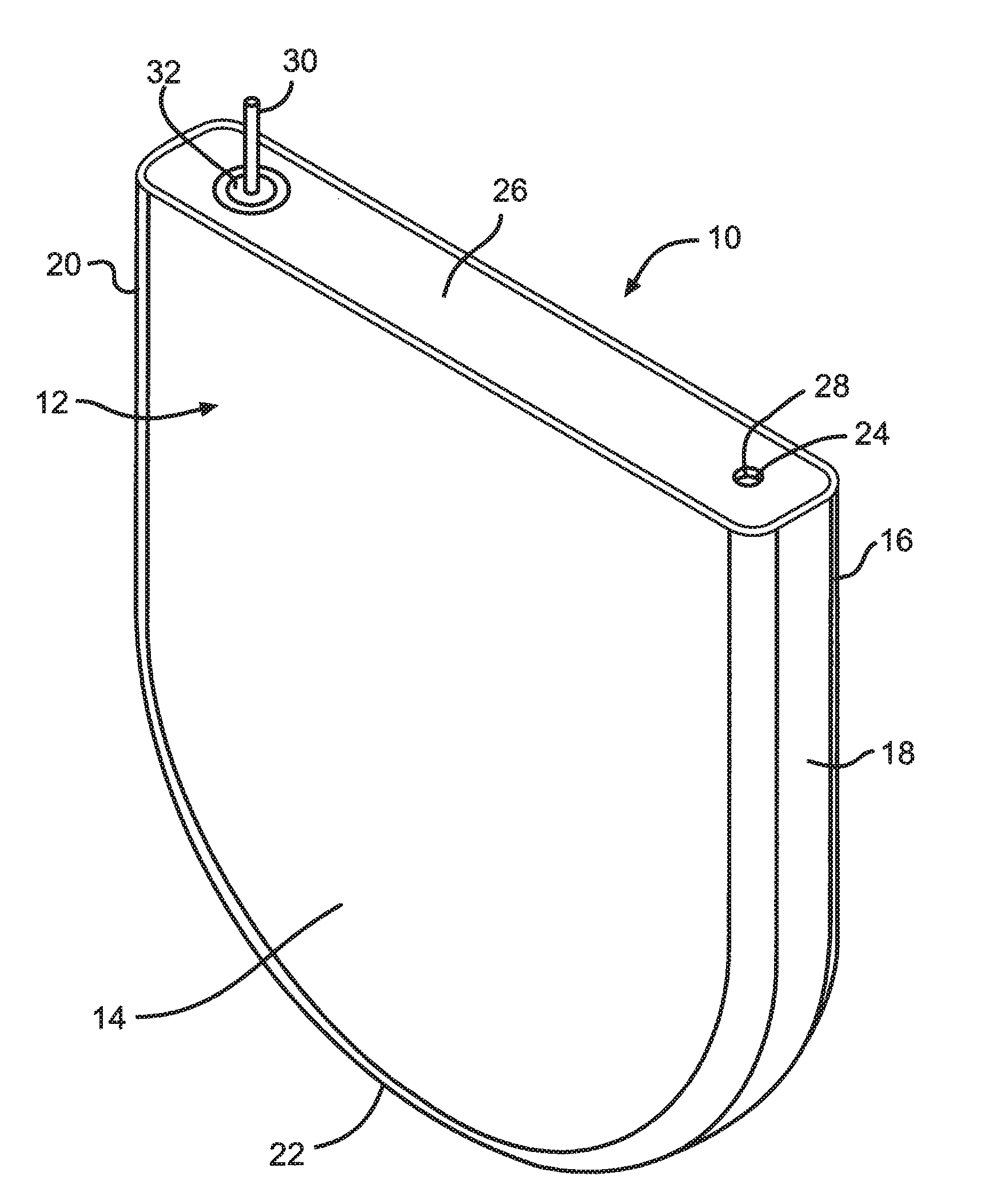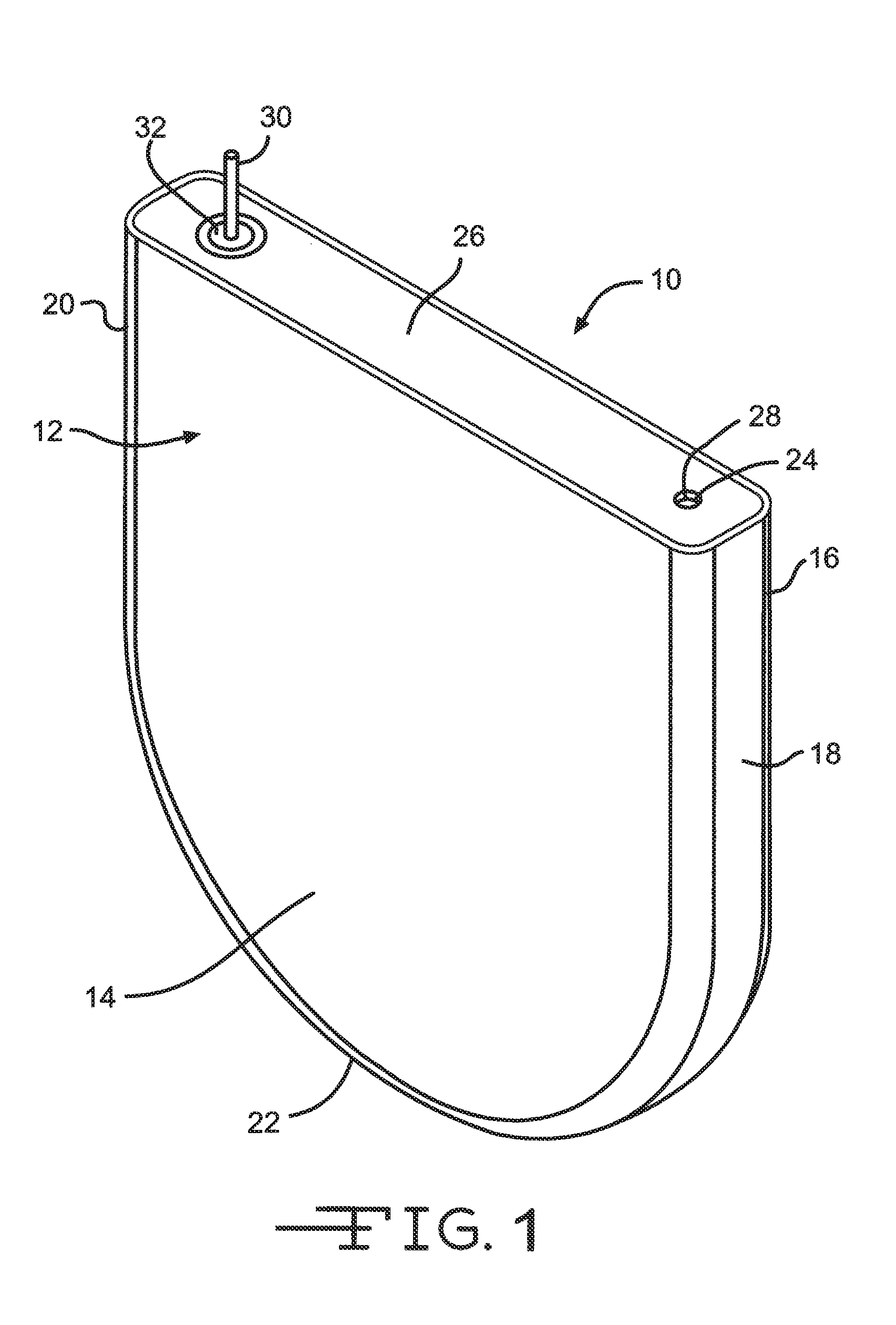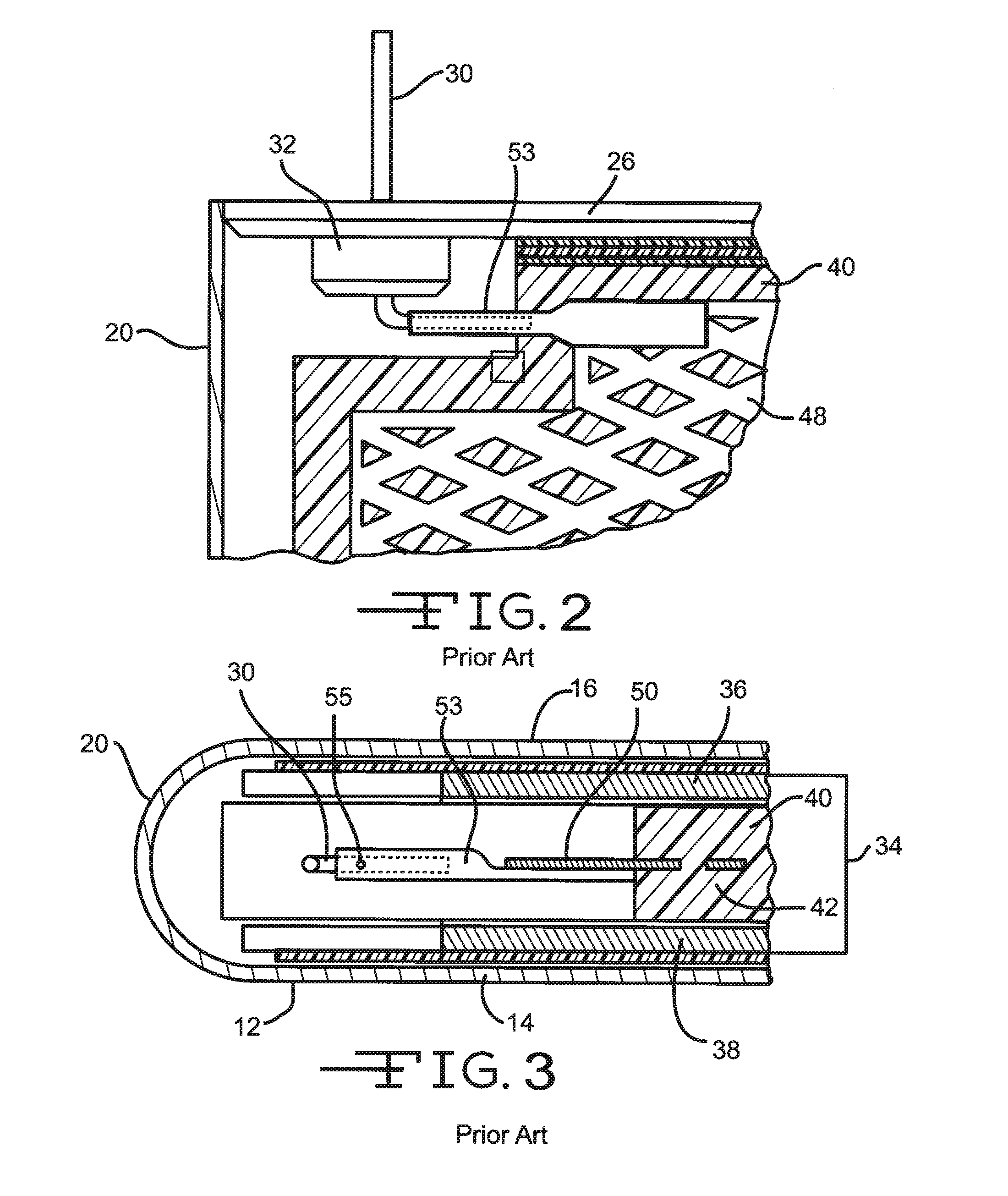Laser welding-self brazing in medical power manufacturing
a technology of laser welding and self-brazing, which is applied in the field of electrical cells, can solve the problems of increasing the difficulty of assembling and manufacturing such small intricate devices, difficult to join and bond components, and prior art bonding techniques such as traditional laser and resistance welding practices, etc., to achieve the effect of reducing manufacturing costs, increasing cell design capabilities, and reducing construction complexity
- Summary
- Abstract
- Description
- Claims
- Application Information
AI Technical Summary
Benefits of technology
Problems solved by technology
Method used
Image
Examples
Embodiment Construction
[0032]Referring now to FIGS. 1, 4 and 5, there is shown an electrochemical cell 10 comprising a casing 12 having spaced-apart front and back walls 14 and 16 joined by curved end walls 18 and 20 and a curved bottom wall 22. The end walls can be curved to provide the casing having an oval cross-section, or they can be generally planar to provide a rectangular or prismatic cross-section. The casing has an opening 24 provided in a lid 26 used for filling the casing 12 with an electrolyte after the cell components have been assembled therein and lid 26 has been welded to casing 12. In its fully assembled condition shown in FIG. 1, a closure means 28 is hermetically sealed in opening 24 to close the cell. A terminal pin 30 is electrically insulated from lid 26 and casing 12 by a glass-to metal seal 32, as is well known to those skilled in the art.
[0033]Cell 10 comprises an electrode assembly 34 (FIG. 4) that further comprises anode electrode components 36, 38 and cathode electrode compone...
PUM
| Property | Measurement | Unit |
|---|---|---|
| melting temperature | aaaaa | aaaaa |
| melting temperatures | aaaaa | aaaaa |
| melting temperature | aaaaa | aaaaa |
Abstract
Description
Claims
Application Information
 Login to View More
Login to View More - R&D
- Intellectual Property
- Life Sciences
- Materials
- Tech Scout
- Unparalleled Data Quality
- Higher Quality Content
- 60% Fewer Hallucinations
Browse by: Latest US Patents, China's latest patents, Technical Efficacy Thesaurus, Application Domain, Technology Topic, Popular Technical Reports.
© 2025 PatSnap. All rights reserved.Legal|Privacy policy|Modern Slavery Act Transparency Statement|Sitemap|About US| Contact US: help@patsnap.com



